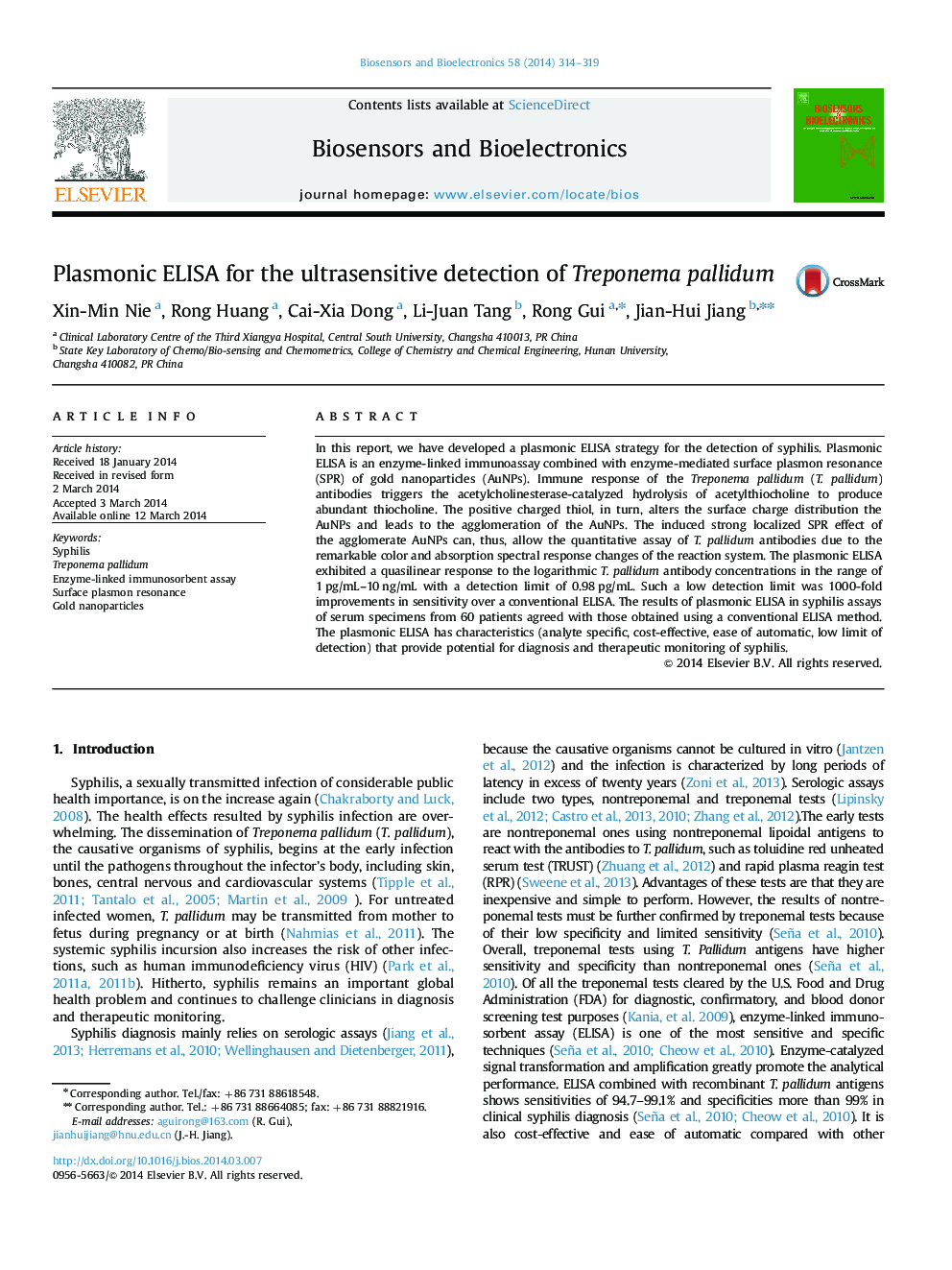| Article ID | Journal | Published Year | Pages | File Type |
|---|---|---|---|---|
| 7233607 | Biosensors and Bioelectronics | 2014 | 6 Pages |
Abstract
In this report, we have developed a plasmonic ELISA strategy for the detection of syphilis. Plasmonic ELISA is an enzyme-linked immunoassay combined with enzyme-mediated surface plasmon resonance (SPR) of gold nanoparticles (AuNPs). Immune response of the Treponema pallidum (T. pallidum) antibodies triggers the acetylcholinesterase-catalyzed hydrolysis of acetylthiocholine to produce abundant thiocholine. The positive charged thiol, in turn, alters the surface charge distribution the AuNPs and leads to the agglomeration of the AuNPs. The induced strong localized SPR effect of the agglomerate AuNPs can, thus, allow the quantitative assay of T. pallidum antibodies due to the remarkable color and absorption spectral response changes of the reaction system. The plasmonic ELISA exhibited a quasilinear response to the logarithmic T. pallidum antibody concentrations in the range of 1Â pg/mL-10Â ng/mL with a detection limit of 0.98Â pg/mL. Such a low detection limit was 1000-fold improvements in sensitivity over a conventional ELISA. The results of plasmonic ELISA in syphilis assays of serum specimens from 60 patients agreed with those obtained using a conventional ELISA method. The plasmonic ELISA has characteristics (analyte specific, cost-effective, ease of automatic, low limit of detection) that provide potential for diagnosis and therapeutic monitoring of syphilis.
Keywords
Related Topics
Physical Sciences and Engineering
Chemistry
Analytical Chemistry
Authors
Xin-Min Nie, Rong Huang, Cai-Xia Dong, Li-Juan Tang, Rong Gui, Jian-Hui Jiang,
